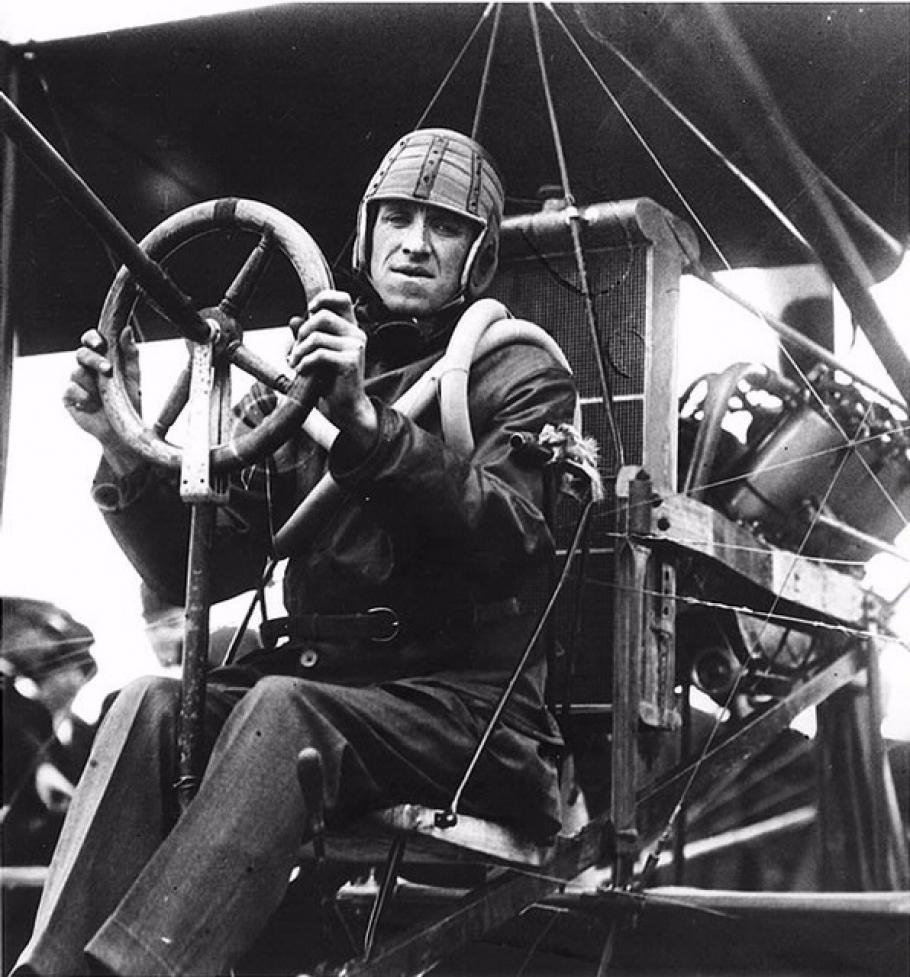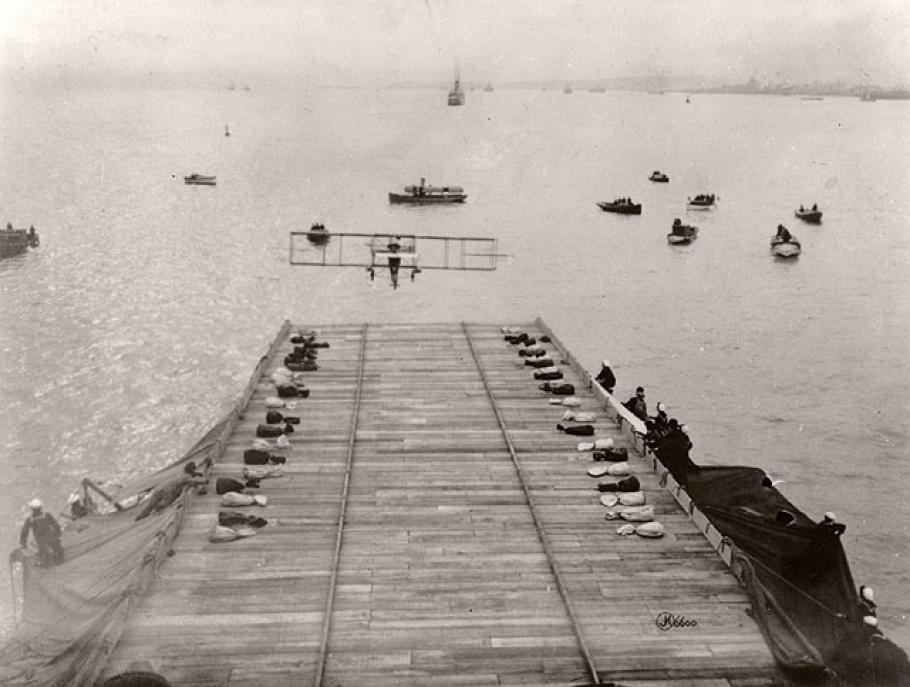In 1909, military aviation began with the purchase of the Wright Military Flyer by the U.S. Army. The Navy sprouted wings two years later in 1911 with a number of significant firsts. The first U.S Navy officers were trained to fly, the Navy purchased its first airplanes from Glenn Curtiss and the Wrights, and sites for naval aircraft operations were established at Annapolis, Md., and at North Island, San Diego, Ca. But the most dramatic demonstration that the skies and the seas were now joined occurred on January 18, 1911, when Eugene Burton Ely made the first successful landing and take-off from a naval vessel.
After receiving an engineering degree in 1904 from Iowa State University, Ely began a career in the fledging automobile industry as a salesman, mechanic, and racing driver. He taught himself to fly in 1910 and never looked back. He had natural skills as an aviator and quickly became a well-known pilot with the Curtiss Exhibition Team that toured all around the county. In the fall of 1910, the Navy identified Captain Washington I. Chambers “to observe everything that will be of use in the study of aviation and its influence upon the problems of naval warfare.” Chambers quickly realized the most important first step to prove that the airplane could operate at sea was to show that landings and take-offs from ships were possible. Chambers attended one of the first major flying meetings, being held at Belmont Park, NY, in October 1910. He met Glenn Curtiss and Eugene Ely at the competition and made a proposition. If he would supply the ship, would they make the attempt to land on board? Ely was excited at the prospect and agreed.
On November 14, 1910, the light cruiser USS Birmingham was readied at Norfolk, Va., with a wooden platform erected on the bow, approximately 80 feet long. Ely’s Curtiss Pusher aircraft (similar to the Curtiss D-III Headless Pusher on display at the National Mall Building), equipped with floats under the wings, was hoisted aboard and the ship moved off shore. Ely succeeded in making the first take-off from a ship, barely. The Curtiss rolled off the edge of the platform, settled, and briefly skipped off the water, damaging the propeller. Ely managed to stay airborne and landed 2 ½ miles away on the nearest land, called Willoughby Spit.
Taking off a ship was one thing. Landing on one was quite another. Despite the somewhat harrowing flight off the Birmingham, Ely was ready to try. With Ely and the Curtiss team scheduled to fly in San Francisco in January, Chambers made arrangements for the attempt on the west coast. The armored cruiser USS Pennsylvania was prepared and anchored in San Francisco Bay. This time a longer platform was in place, 120 feet, along with ropes and sandbags stretched across to serve as a crude arresting system for landing. There was also a canvas awning at the end to catch the airplane if the ropes and sandbags were not sufficient. With longer wings and hooks on the landing gear, and Ely donning a padded football helmet and bicycle inner tubes around his body in case anything went awry, all was ready on the morning of January 18, 1911. Crowds lined the shore and boats collected in the harbor to witness the daring flight. At 11:00 a.m., Ely took off from nearby Tanforan Race Track and headed for the Pennsylvania. To the delight of thousands of spectators, Ely made a safe landing, the arresting equipment working perfectly. After lunch with the ship’s captain and a few photographs, the platform was cleared and the Pennsylvania was pointed into the wind. Ely took off, flew past the crowd, and landed safely back at Tanforan. Naval aviation was born.
The attention bestowed upon Ely after the successful Pennsylvania flights made him an even bigger star with the Curtiss Exhibition Team. He toured all over the United States during the remainder of 1911. Sadly, as was the fate of so many of these early show pilots, Ely lost his life in a crash during a performance in Macon, Ga., on October 19. He was formally recognized for his seminal contribution to naval aviation in 1933, when the Navy posthumously awarded him the Distinguished Flying Cross.



